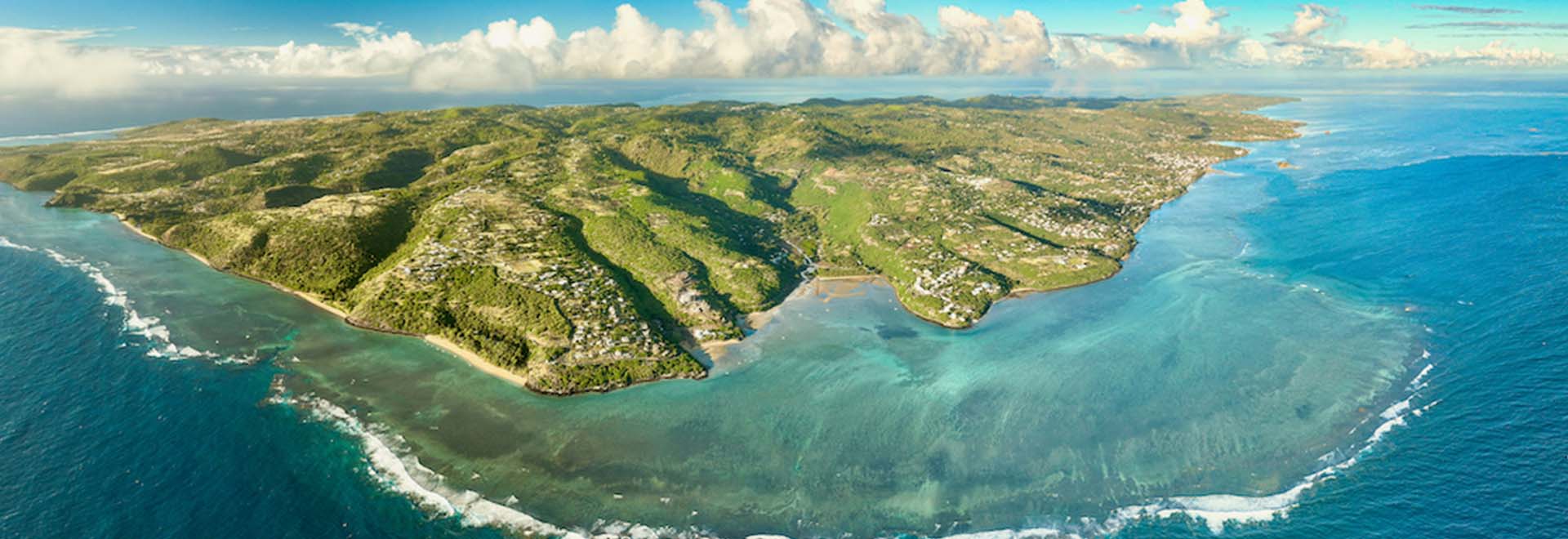Rodrigues is a 108 km² autonomous outlying island of the Republic of Mauritius in the Indian Ocean, approximately 650 km east of Mauritius. It is one of the Mascarene Islands, along with Mauritius and Réunion. Rodrigues, like Agaléga, is a constituent island of the Republic of Mauritius under the Mauritius Constitution and remains, as explicitly defined by the same Constitution, part of the Sovereignty of Mauritius, along with "Agalega, Tromelin, Cargados Carajos (Saint Brandon), Chagos Archipelago, Diego Garcia and other islands being part of in the State of Mauritius."
Rodrigues Island has a rich history that is intertwined with the broader history of the Indian Ocean and the colonisation of the region. Throughout its history, Rodrigues Island has undergone various cultural influences, resulting in a diverse population with a unique blend of African, European, and Asian heritage. The island's history is marked by a mix of colonial legacies, economic changes, and efforts towards autonomy and sustainable development.
Rodrigues was named after Portuguese explorer Diego Rodrigues, who discovered the deserted island in February 1528 while working for Portuguese Viceroy Pedro Mascarenhas (the Mascarene Islands' namesake). Many maps refer to it as Diego Roiz. Arabs have been documented to visit the Mascarene Islands since the 10th century. They are supposedly depicted on a 12th-century map by the Arab geographer Ash-Sharif al-Idrisi and the Cantino planisphere of around 1500 and some other contemporary maps clearly show the three Mascarenes islands as Dina Arobi (or Harobi), Dina Margabin, and Dina Moraze.
Few visitors came because the island was off the beaten path for mariners at the time. Beginning in 1601, the Dutch began to visit the island more frequently in search of new food supplies. In 1691, Huguenot François Leguat and seven friends arrived on the island with the intention of establishing a farming colony of Protestant refugees. Farming was unsuccessful, but there were plenty of tortoises, turtles, birds, fish, and other seafood.
Several attempts were made by the French to develop the island during the 18th century. African slaves (forefathers of the current population) were transported to Rodrigues to help promote animal breeding and farming. A permanent French settlement, subservient to Île Bourbon, was formed in 1735. In 1736, Rodrigues Island had its first inhabitants.
After a brief skirmish with the French, British troops took control of Rodrigues in 1809. Slavery was subsequently abolished after British conquest in 1834. By 1843, the population had dropped to 250.
Rodrigues was relatively isolated and received less attention than the larger neighboring islands of Mauritius and Réunion. This led to a slower pace of development and a preservation of its natural beauty. Rodrigues remained part of the British colony of Mauritius until 1968 when Mauritius gained independence. After independence, Rodrigues retained its status as an autonomous outer island within the Republic of Mauritius.
In 2002, Rodrigues Island was granted greater autonomy with its own elected Regional Assembly and Chief Commissioner. This move aimed to empower the local population and facilitated more effective governance.
In recent years, Rodrigues has seen efforts to promote sustainable tourism, capitalizing on its natural beauty, coral reefs, and unique cultural heritage. The island's economy has diversified beyond traditional sectors like agriculture and fishing.
General Information
The island is known for its tranquility, beautiful landscapes, and coral reefs. A beautiful unspoilt nature, a vast lagoon for water sports and fishing, a delicious and creative cuisine, and an incredibly welcoming local population await visitors. You will inevitably fall under the charm of this island which lives at another pace.
The capital of Rodrigues is Port Mathurin. Unlike Mauritius, Rodrigues is not heavily developed and this contributes to its peaceful atmosphere.
The economy of Rodrigues relies on agriculture, fishing, and a growing tourism sector. The island has a distinct culture, and its people, known as Rodriguans, have a unique Creole language and traditions.
Rodrigues Island is a popular destination for those seeking a quieter and more laid-back experience compared to the more bustling tourist destinations in the region. The island offers opportunities for outdoor activities such as hiking, snorkeling, and bird watching. It is an ideal playground for walkers and trailers with a hilly terrain that offers a splendid view from wherever you are and a return to nature. The east coast also features exceptional hikes with several coves along this coast, just enjoy the peace and unspoilt nature.
Rodrigues is a vibrant island with a culture of its own. The Sega Tambour, the traditional dance from Rodrigues, is now a UNESCO Intangible Heritage; you definitely have to learn a few steps during your stay, it won’t be that easy though! Its cuisine is not only delectable, it is made with the heart; Sausage rougaille, «ourite» salad (octopus), red beans soup, papaya pie, pork curry and Kono-kono salad, are among the specialties of the island’s gastronomy. Its honey is also renowned worldwide, many locals produce their own backyard honey, and it is of very good quality.
When planning your trip to Mauritius, why not book 5-7 days to explore Rodrigues. The flight journey between the two islands lasts only an hour and a half. You will undoubtedly be conquered by your stay in Rodrigues.


